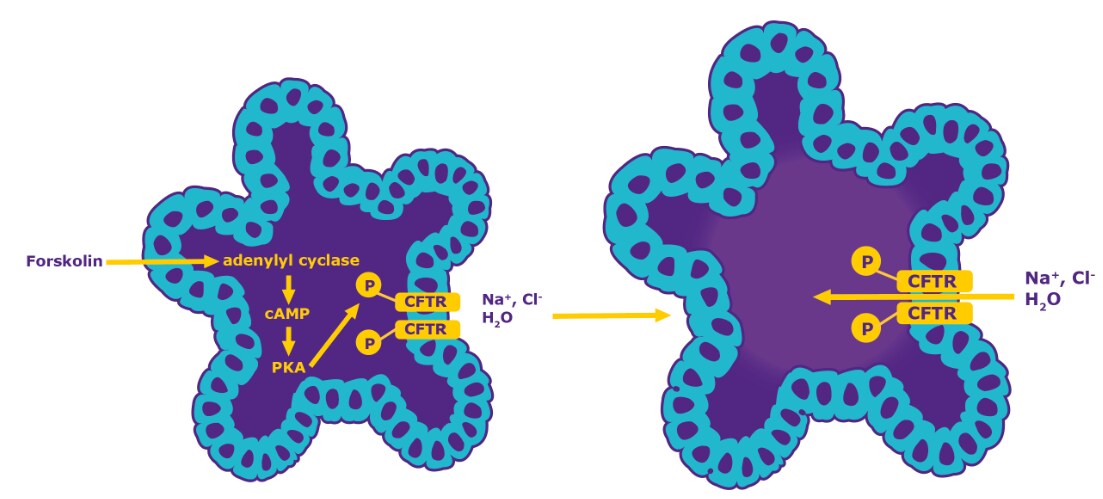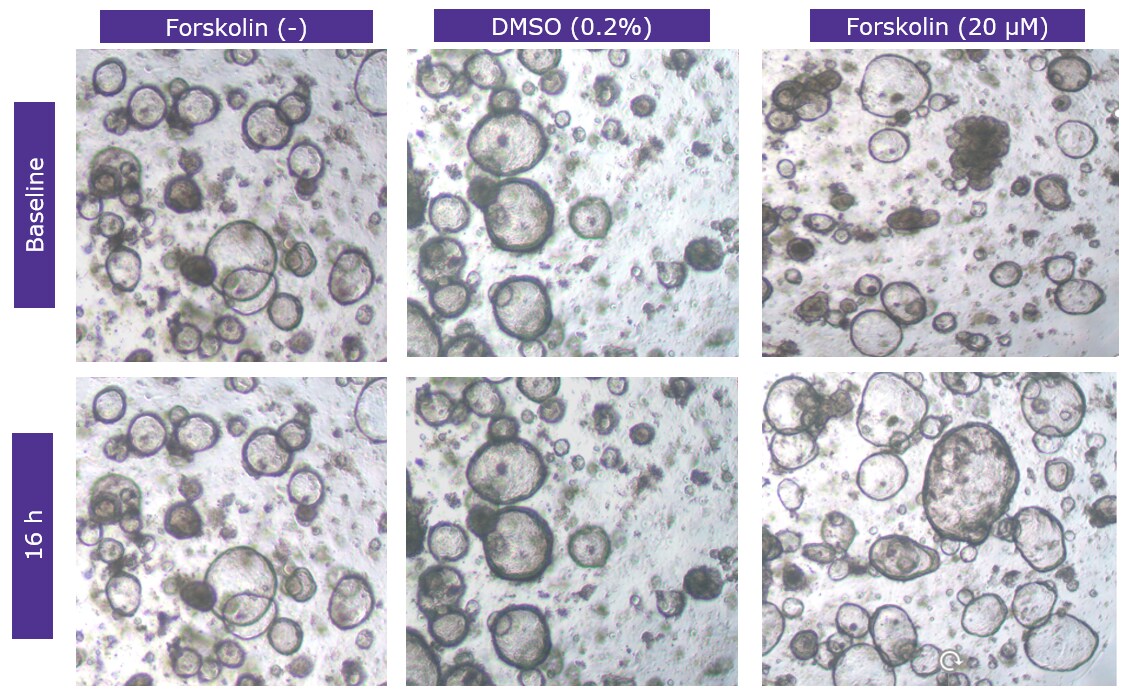Forskolin-Induced Swelling Assays
Cystic fibrosis is caused by mutations in the CFTR gene and is highly variable between individuals, with over 1,900 CFTR mutations identified.1 CFTR (cystic fibrosis transmembrane conductance regulator) functions as an anion channel and is essential for normal fluid and electrolyte homeostasis at the epithelial surfaces of many organs. Although CFTR-specific drug targeting is promising, the degree of CFTR function restoration is still limited and would be facilitated by better in vitro drug compound screening cell models.2
Organoids are heterogeneous, self-organizing 3D cell culture models that are frequently derived from stem cells.3 Intestinal epithelium organoids, often referred to as enteroids or “mini-guts”, maintain physiological characteristics of the gastrointestinal system, and have been a useful in vitro tool for modeling intestinal diseases including cystic fibrosis.4 Human colon organoids can be effective as a phenotypic drug screening tool to monitor CFTR function using a rapid and quantitative water-uptake swelling assay induced by forskolin.5, 6, 7

Figure 1. Mechanism of organoid-based forksolin-induced swelling assays.CFTR function can be assayed using patient-derived intestinal organoids by adding forskolin, a CFTR activator that stimulates adenylate cyclase and increases intracellular cAMP. Elevated cAMP levels activate protein kinase A (PKA) which phosphorylates CFTR, opening the CFTR channel leading to ion (Cl-/Na+) and water uptake (organoid swelling). CFTR wild type intestinal organoids will swell with forskolin addition within 2-3 hours, while cystic fibrosis-derived intestinal organoids will remain at baseline volume.
Forskolin-Induced Organoid Swelling Assay Protocol
- Culture and expand human colon organoids (SCC300) as per manufacturer’s recommendations.
- Seed human colon organoids into 25 µL Matrigel® GFR (Growth Factor Reduced) domes.
- Allow clumps or fragments of human colon organoids to reform into organoids in the presence of ROCKi, 10 µM (SCM075) and 3dGRO™ Human Colon Organoid Expansion Medium (SCM304) for 2 days.
- Prepare concentrations of Forskolin (F6886) (2.5, 5.0, 10, and 20 µM) in 3dGRO™ Human Colon Organoid Expansion Medium (SCM304).
- Add 1 mL of the desired concentration of Forskolin-supplemented media (from step 4) into each well of a 24-well plate containing a 25 µL Matrigel® GFR dome.
- Monitor and image approximately once per hour to capture the swelling of organoids. Swelling will typically begin at about 3 hours post-treatment and continue for up to 36 hours.
Forskolin Forskolin (20 µM)
Figure 2. Time-course for forskolin-induced organoid swelling. Human colon organoids were incubated with/without forskolin (20 µM) and captured over a 36 hour time period.

Figure 3. Morphology of colon organoids after forskolin-induced swelling.Wild-type human colon organoids (CFTR+) incubated with forskolin (20 µM) begin to swell at hour three and reach maximal swelling volume at hour sixteen. Colon organoids derived from cystic fibrosis patients (CFTR-) do not swell at any timepoint when subjected to the same conditions.
Order Info
References
如要继续阅读,请登录或创建帐户。
暂无帐户?